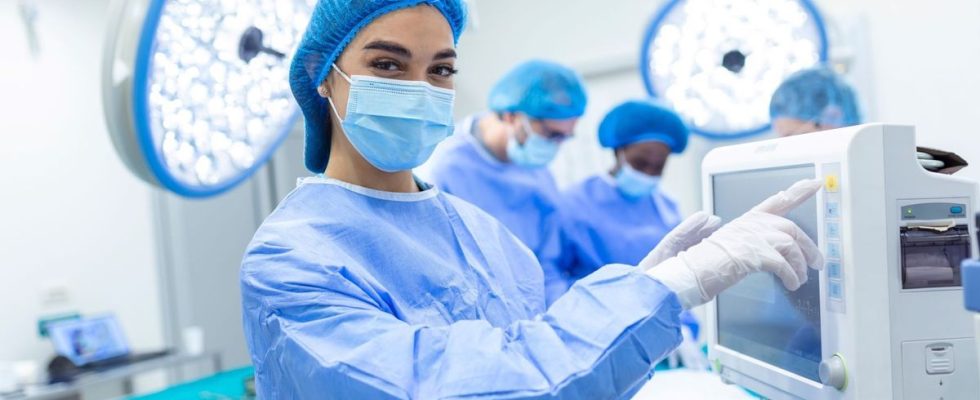Published on
Updated
Reading 3 min.
in collaboration with
Laurent Mathieu (Perfusionist)
You’ve probably never heard of the profession of perfusionist. This is a healthcare professional, often a nurse, responsible for managing the extracorporeal circulation of patients in the operating room, undergoing cardiac surgery. Explanations from Laurent Mathieu, perfusionist at Bordeaux University Hospital and president of the SNPerfu union.
Speaking to our France Info colleagues on Friday January 19, the head of the cardiac surgery department at the Parisian Necker hospital expressed alarm. “Today, 350 children are waiting for their heart surgery at the Necker hospital. This means that, in fact, we have to deplore several deaths each year linked to this wait, but above all that the submerged part of the iceberg is pulmonary after-effects, digestive after-effects, neurological after-effects of all these patients, because they wait too long. A child dies every month!” he laments.
What is the job of perfusionist?
Quite rare, the profession of perfusionist only concerns 300 people in France. The perfusionist – who is currently a perfusionist nurse – does not yet exist as such.
In fact, it is nurses who perform this function in the operating room. The perfusionist manages the extracorporeal circulation of patients in the operating room when they undergo cardiac surgery.
The profession is also the subject of demands from the SNPerfu union, created in October 2023 and chaired by Laurent Mathieu, nurse perfusionist at Bordeaux University Hospital. “We want to make it a full-fledged profession. Currently, the majority of us are nurses, only 4% of perfusionists are doctors. But we lack trained professionals, we need around fifty more to be able to work properly”.
In fact, it is a one-year fellowship training course, with an already trained perfusionist. “This is the average time to master the profession. But there has also been a Master’s degree since 2020, at the Sorbonne University in Paris” notes Laurent Mathieu.
What are the functions of the perfusionist?
Standing close to the surgical team, the perfusionist – who does not need sterile clothing – also works in the operating room. “Owaits for the surgeon to place a cannula in the right cavity of the heart, the blood will thus be drained towards the extracorporeal circulation system, then, before being reinjected, it will be reoxygenated and cooled or warmed depending on the operations. adds the expert.
The blood then returns to the patient’s body, through the ascending aorta. “A whole series of biological parameters, which we call blood gasmust also be monitored, as does blood coagulation, which if there is a problem, can cause serious problems for the patient. adds the perfusionist.
So many responsibilities which are currently not recognized. “This does not necessarily encourage vocations, because in addition to all these responsibilities, long working hours… The status remains that of a nurse” deplores the president of the union.
A role to play in organ transplants
In addition to this main function in the operating room, the perfusionist also has other hats.
“Interventions for arrested open heart surgery represent 70 to 80% of our working time. But there are also other missions, such as the management of ECMO, these extracorporeal circulations placed in the operating room that we must monitor on patients in intensive care, teaching, research, the role of evaluating the organs which are potential grafts, the ECMO which is placed in a patient declared dead, to maintain blood circulation and oxygenation of his organs (with the exception of the brain)… This represents a lot of responsibilities while legally, we are facing a no man’s land, from the point of view of responsibilities” further denounces Laurent Mathieu, who pleads for the creation, in its own right, of the profession of perfusionist.
